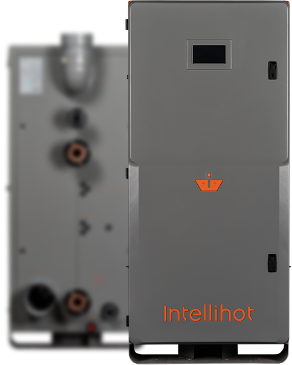

Hotels, restaurants, and other buildings waste water and energy unnecessarily due to a reliance on technology that has not improved much since its invention in the 1890s.
By: Sridhar Deivasigamani, CEO and founder of Intellihot
Originally Published 11/01/21 Hospitality Technology
Because of the climate crisis, the hospitality industry is having sweeping conversations on how to reduce environmental waste and pollution everywhere. To address the devastating impacts of climate change, hotels and restaurants are instituting everything from bans on plastic straws to expansive power shutoffs to prevent the spread of wildfires.
All of this work is important, to be sure. But something that doesn’t receive enough attention is the amount of water and energy wasted in the built environment: the buildings where we work, the hotels where we sleep, the stadiums where we enjoy games, and the restaurants we visit every week.
Something as simple and ubiquitous as a hot water heater is critical for the operations of these facilities, but there’s a large problem with the current system: It wastes a tremendous amount of water and energy, it’s expensive, and it can create an unhealthy — and sometimes fatal — environment for people.
Now, however, we have an opportunity to disrupt the legacy water heating systems — think 1890s — in the built environment. We can eliminate the thousands of gallons of water that are wastefully stored 24/7, and decrease the amount of energy needed to keep that water hot — all while improving service and aiding the health of the consumer. We can bring our hot-water system out of the age of the Victrola and into the modern era.
To put it another way, our current water heating system is at a post-industrial revolution steam engine level of efficiency — at best. But we can make it a high-speed rail system. Here’s how.
For starters, let’s agree that hot water is one of the most critical elements for all businesses: For example, hotel guests want hot showers, restaurants must wash their dishes, and stadiums need water everywhere. A lack of hot water can lead to high levels of customer dissatisfaction, which can be devastating for a business considering that 94% of consumers avoid a particular business if it has bad Yelp reviews, according to one study.
To meet this need for hot water, facilities are forced to bring in multiple massive storage hot water tanks that sometimes must be installed by a helicopter. These tanks are then filled with water, which needs to be kept hot by a boiler 24 hours a day, seven days a week. These tanks require energy — a lot of it — to keep their temperature up at all times. Also, these bulky tanks keep water stagnant and are potentially a breeding ground for lethal bacteria.
Here are the effects of this inefficient status quo:
My vision is a world where hot water unpredictability is a thing of the past, as is keeping water continuously hot in unnecessarily enormous tanks.
Instead of using these uneconomical hot-water systems, we should explore bringing on-demand modular (ODM) hot-water heating into the built environment.
The benefits are myriad: ODM heaters take up 80% less space and consume 40% less energy than the current system, which equates to thousands of tons of greenhouse gases that aren’t expelled into the environment. Every day, the U.S. wastes billions of gallons of water — one-sixth of the amount of water in Lake Tahoe — that’s unnecessarily stored. And ODM heaters produce hot water only on-demand, meaning no water is wasted.
An updated system is much more reliable, as well. The technology has evolved to the point where companies can use IoT to predict potential problems, reducing risks and capital/operational expenditures for hospitality leaders everywhere. Imagine knowing that you need to service your water heater and can simply have it serviced instead of constantly worrying about its performance.
Lastly, the problem of Legionnaire’s disease can’t be overstated. The incidence of this disease has increased dramatically over the years, and it is often caused by bacteria that thrive in stagnant water — exactly the type of environment created by hot water systems. “Older, centralized water heating systems increased the risk for Legionella contamination,” according to the National Institutes of Health (NIH).
On-demand modular DM heaters produce comfortable, luxurious, and healthy hot water on demand without storing it in archaic tanks, which means the threat of Legionnaires’ disease is basically non-existent. In the aforementioned study, the NIH made several suggestions to limit the spread of legionella bacteria. Its first recommendation: tankless water heaters.
We all realize the importance of changing our ways to improve our environment. And while the more obvious methods are crucial to creating a better tomorrow, we can take an even bigger step forward by addressing water usage in our built environment.
ABOUT THE AUTHOR
Sridhar Deivasigamani is the CEO and co-founder of Intellihot, a Chicago-based clean technology company that is creating next-generation technology solutions to transform the built environment.

2900 W Main St.,
Galesburg, IL 61401
General: 1-877-835-1705
Product Support (24/7): 1-866-692-6791
